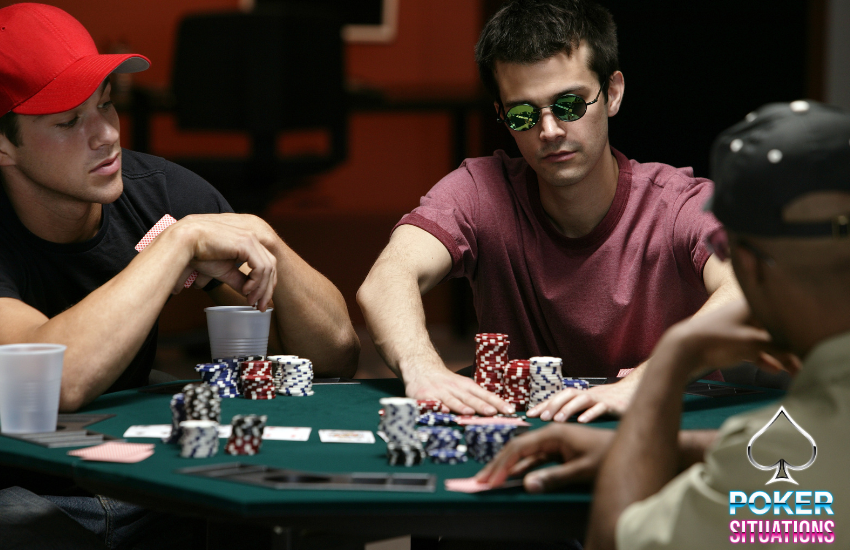
Texas Hold’em Betting Strategies: Mastering the Art of Bluffing
Bluffing is one of the most powerful weapons in a poker player’s arsenal. In Poker Tournaments and cash games alike, mastering the art of bluffing can be the difference between winning big and losing your stack. Texas Hold’em is a game of skill, psychology, and calculated risks, and knowing when and how to bluff effectively is essential for long-term success.
This guide will walk you through advanced Poker Strategy techniques for bluffing, helping you develop a sharper, more deceptive game at the tables.
Understanding Bluffing in Texas Hold’em
Bluffing is the act of betting or raising with a weak or marginal hand to make your opponent fold a stronger hand. It’s a fundamental aspect of Texas Hold’em because the best hand doesn’t always win—sometimes, the most aggressive player does.
However, not all bluffs are equal. Bluffing too often can make you predictable, while never bluffing means missing out on opportunities to steal pots. The key is balance and timing.
Types of Bluffs in Poker
1. Pure Bluff (Total Bluff)
A pure bluff is when you have absolutely no chance of winning the hand unless your opponent folds. For example, betting aggressively on a missed straight or flush draw on the river.
When to Use It:
- Against tight players who fold easily.
- When the board heavily favors your perceived range.
- When you have a strong table image.
2. Semi-Bluff
A semi-bluff is when you bet or raise with a hand that is currently weak but has the potential to improve. Examples include flush and straight draws.
Why It Works:
- If your opponent folds, you win immediately.
- If they call, you still have outs to improve and win at showdown.
3. Continuation Bet (C-Bet) Bluff
A continuation bet bluff occurs when you raise preflop, miss the flop, but still bet as if you connected with the board.
Best Scenarios for C-Bet Bluffing:
- Heads-up pots rather than multi-way.
- Dry flops that don’t connect well with most hands.
- Against opponents who play straightforward poker.
4. Check-Raise Bluff
A check-raise bluff is a deceptive play where you check, induce a bet from your opponent, and then raise.
Why It Works:
- It signals immense strength, often forcing opponents to fold.
- Effective against aggressive players who frequently c-bet.
Key Factors for Successful Bluffing
1. Know Your Opponents
Understanding player tendencies is crucial for bluffing. Some players fold easily, while others are calling stations who never fold. Bluffing against the wrong player can be disastrous.
- Tight players: Bluff more often.
- Loose players: Bluff sparingly, as they are more likely to call.
- Experienced players: Use advanced bluffing techniques like double barrels.
2. Consider Your Table Image
Your previous actions affect how opponents perceive you. If you’ve been caught bluffing several times, your future bluffs are less likely to work. Conversely, if you’ve been playing tight, your bluffs will carry more weight.
3. Board Texture Matters
Certain boards are better for bluffing than others. Dry boards with no straight or flush draws make for great bluffing opportunities since they rarely improve an opponent’s hand.
- Good Bluffing Boards: K-7-2 rainbow, A-5-3.
- Bad Bluffing Boards: J-10-9 with two suited cards (since many hands connect with these boards).
4. Position is Power
Bluffing from late position is much easier than from early position. If you act last, you get to see how your opponents react before making a decision, allowing you to execute better-timed bluffs.
5. Bet Sizing for Maximum Effect
Your bet size should be consistent with a strong hand. Small bets can look weak, while overly large bets may raise suspicion.
- Flop Bluff: 50-70% of the pot.
- Turn Bluff: 60-80% of the pot.
- River Bluff: 75-100% of the pot (when representing the nuts).
Advanced Bluffing Techniques
1. The Triple Barrel Bluff
A high-risk, high-reward bluff where you fire bets on the flop, turn, and river.
When to Use:
- Against a single opponent.
- On dry boards that favor your range.
- When you have a strong table image.
2. The Reverse Tell Bluff
Using misinformation to deceive your opponents. For example, appearing nervous when you have a strong hand to induce a call.
3. Overbet Bluff
A large bet that represents an extremely strong hand, often scaring opponents into folding medium-strength hands.
When It Works:
- When you have an aggressive table image.
- When your opponent is pot-committed but still capable of folding.
Bluffing Mistakes to Avoid
- Bluffing Too Often: If you bluff frequently, opponents will catch on and call you down.
- Bluffing at the Wrong Time: Trying to bluff a calling station is a losing battle.
- Ignoring Bet Sizing: Your bets should tell a consistent story.
- Forgetting to Represent a Hand: Your bluffs should make sense based on the board.
- Ignoring Position: Bluffing out of position is much riskier.
How to Defend Against Bluffs
If you suspect an opponent is bluffing, you can counter it by:
- Calling down light: If their story doesn’t add up, don’t be afraid to call with medium-strength hands.
- Raising back: Re-raising a suspected bluffer can force them to fold.
- Paying attention to timing: Fast bets often indicate weakness, while hesitant bets might mean strength.
Conclusion
Bluffing is an essential skill in Poker Tournaments and cash games. When executed correctly, it allows you to win pots without the best hand, making you a more formidable player. However, bluffing is an art that requires balance, timing, and the right opponent selection. By incorporating these advanced Poker Strategy techniques, you can improve your game, outmaneuver your opponents, and dominate the tables.
Whether you’re playing online or in a live setting, the key to successful bluffing is observation, adaptation, and execution. Start implementing these strategies today and take your Texas Hold’em skills to the next level






